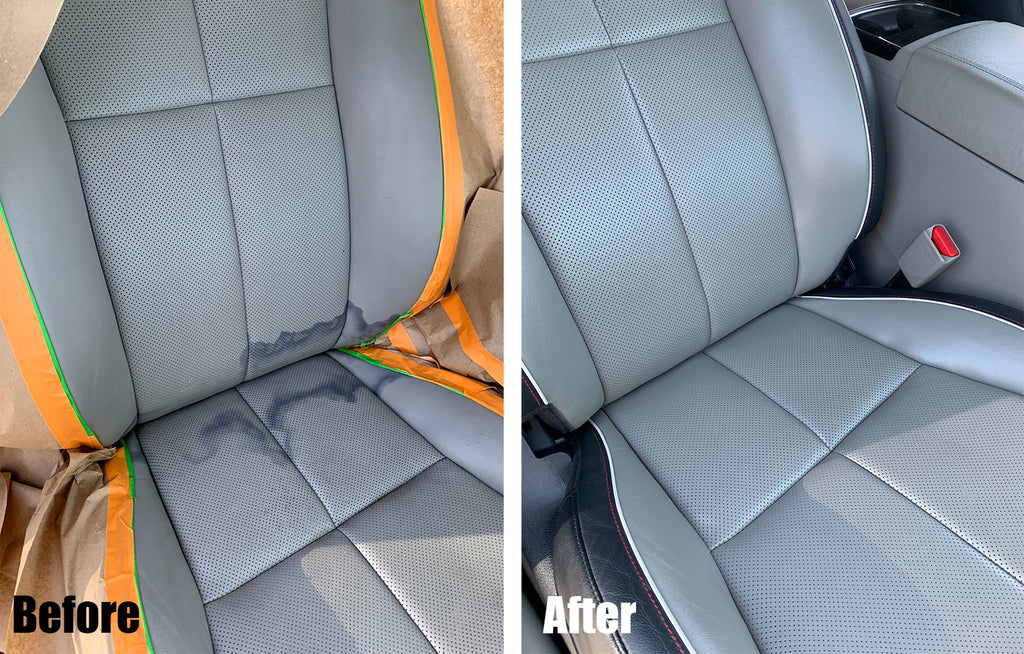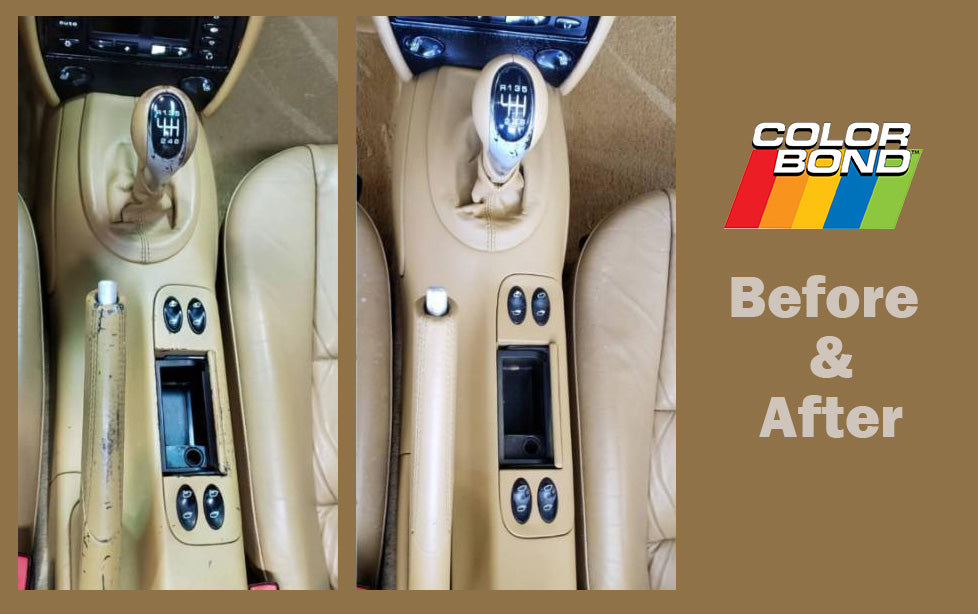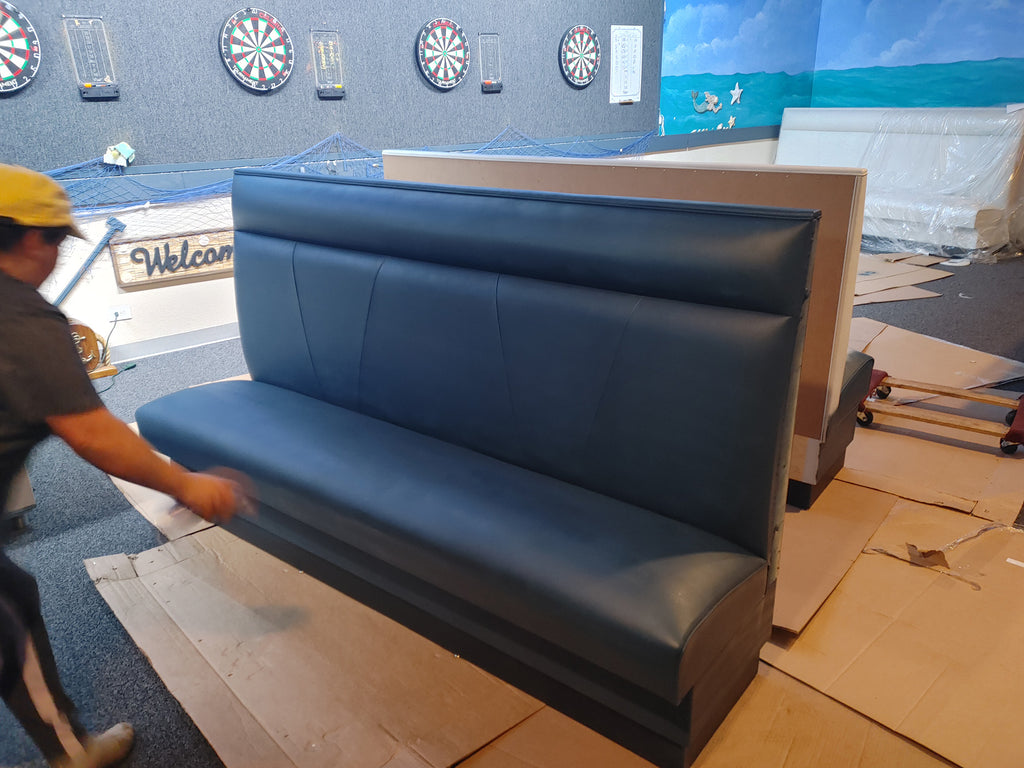
How to Restore Vinyl Furniture as a DIY Project
Vinyl furniture comes in all shapes and sizes, from ottomans to restaurant booth seating. Vinyl is a popular material for upholstery as it is durable, cheaper than leather, cleans easily and is available in most any color, style, or pattern. While good quality vinyl wears well and can last for years, it can succumb to wear and tear damage, staining and discoloration. While vinyl furniture can be reupholstered, or even replaced, a more economical option can be to repair and renew the existing vinyl. In this article we’ll discuss how to restore vinyl furniture as a DIY project.
Stains
Some stains can be removed from vinyl. If you have access to the manufacturer’s care instructions, it may provide tips on how to do so. Here are some ideas on how to restore vinyl furniture by removing stains. Well start with easy some homemade solutions. Keep in mind it’s recommended to wear rubber or nitrile gloves when using cleaners.
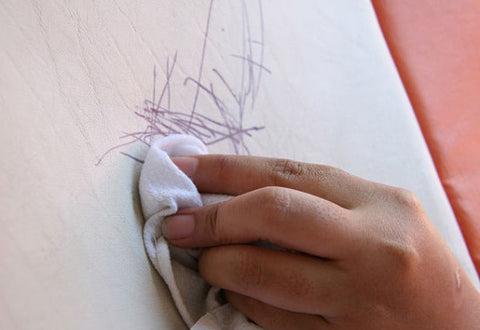
- Dishwashing detergent can remove a variety of stains. A mild detergent with no harsh chemicals should be used. In a bowl, mix one tablespoon of detergent with warm water and scrub the stained area with a soft bristled scrub brush. Scrubbing in a circular motion typically works best.
- Rubbing alcohol works well for removing stains, especially ink. Be sure the alcohol used is indeed rubbing alcohol, which is 100% isopropyl alcohol that is diluted with water. To be safe, the alcohol should contain no more than 50% isopropyl alcohol, so it isn’t too harsh on the vinyl. The alcohol can be applied with a clean white cloth or white cotton pad or cotton ball. Pour a little alcohol onto the cloth, pad or ball and rub the stained area in a circular motion.
- Apple cider vinegar is another homemade solution that work to restore vinyl furniture. In a bowl, mix one tablespoon of apple cider vinegar with two cups of warm water. Scrub the stained area with a soft bristled scrub brush. Again, scrubbing in a circular motion typically works best.
- Commercial vinyl cleaner is an off the shelf solution. Spray-on cleaners that are specifically designed for cleaning vinyl can be used, as can all-purpose cleaners like 409 and Windex. Using a cloth and/or soft bristled scrub brush works to get the job done.
If the stain cannot be removed, another way how to restore vinyl furniture is to use ColorBond LVP to cover the stain. ColorBond LVP is a specialized paint designed to restore and renew vinyl (as well as leather and plastic) surfaces. Simple and easy to use, ColorBond LVP bonds strongly without cracking or peeling. The vinyl paint is highly pigmented to provide great coverage yet has a thin film that allows the vinyl surface texture to show through. The color and finish quality are beautiful, and the paint has the durability needed to last for many years. ColorBond LVP is available in over 205 colors, which can be viewed here.
Before painting, dirt, grime, and oils need to be removed. This can be done with ColorBond Prep Cleaner or rubbing alcohol. It’s important that the cleaner used doesn’t leave residue. This prepares the vinyl for best adhesion of ColorBond LVP. ColorBond LVP can be used blend and feather the repair into the surrounding area. Typically, the first or so coats are concentrated on an area about 1” beyond the edges of the repair, then extra coats of are sprayed outward to blend the paint. Another option is to paint the complete vinyl panel. Of note, it takes about two minutes for a coat to dry and the paint bonds within ten minutes.
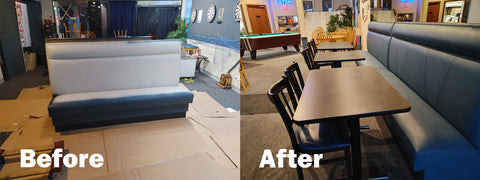
Restaurant booth restored with ColorBond LVP
Holes and Tears
Using vinyl filler is an effective way how to restore vinyl furniture that has a hole or tear. Rather than using a patch, this fills the hole or tear and provides a level surface which can be color matched with vinyl paint. Keep in mind repairing holes and torn vinyl is best done sooner than later, as the longer the damage is allowed to remain, the larger the damaged area will become, and the harder it will be to fix.
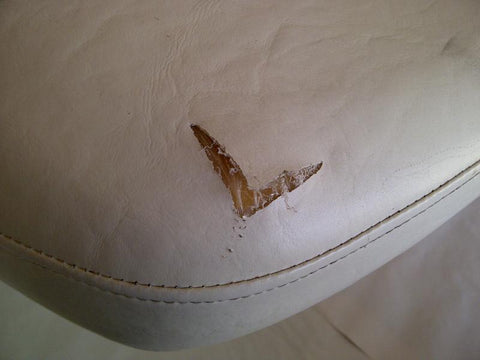
Procedure:
- Trimming – If needed, start by trimming any ragged ends or loose threads so the edges of the damage are as smooth and clean as possible.
- Clean the area – To properly restore vinyl furniture, the vinyl needs to be cleaned with ColorBond Prep Cleaner, rubbing alcohol, or another cleaner that doesn’t leave a residue. This way the vinyl filler has a clean and oil free surface to bond to. Clean 1 to 2 inches beyond the damaged area.
- Sand – Lightly sand about ½ inch beyond the edges of the damaged area with 320-grit sandpaper so the vinyl filler has something to bite onto. A light scuffing is all it takes. Wipe off any sanding dust with a clean white cloth.
- Vinyl Filler – Vinyl fillers are made to restore vinyl furniture, have a very soft putty like or thick liquid like consistency, and are applied with a spatula tool, which is often is included with vinyl filler kits. Dip the spatula into the filler and apply it into the damaged area. Spread the vinyl in an even and thin layer across the damaged area and a little beyond the edge of the damage. Wetting your fingertip with water makes it easier to smooth the filler and blend the edges. Additional layers may be necessary to build the repair surface level with the surrounding surface. Remember to feather the edges out on each layer is it is applied and be sure the final layer is as smooth and flush as possible.
- Graining Paper – The best way how to restore vinyl furniture is to be sure to make the repair visually blend as much as possible. To match the surface texture of the repair to the surrounding vinyl, graining paper can be used. Grain paper is a heavy paper available in vinyl-like textures that is laid on top of the repair and heated to emboss the paper’s grain pattern into the repair area. There are lots of grains available to restore vinyl furniture, so there’s most likely something that matches, or at least comes very close to matching the grain of your vinyl. Graining paper can be found online in pad form a variety of grain patterns included. Start by wiping the surface down with ColorBond Prep Cleaner, rubbing alcohol, or another cleaner that doesn’t leave a residue and then dry. Set a piece of the graining paper on top of the repair and then apply a hot iron, as directed by the manufacturer, for 30 to 60 seconds to emboss the grain pattern into the repair.
- Final Finish – The final step of how to restore vinyl furniture is to color match the repair to the vinyl the area is to use ColorBond LVP. As described earlier, ColorBond offers over 205 colors for restoration, which can make finding a color match easy. ColorBond LVP can be used blend and feather the repair into the surrounding area. Typically, the first or so coats are concentrated on an area about 1” beyond the edges of the repair, then extra coats of are sprayed outward to blend the paint. Another option is to paint the complete vinyl panel.
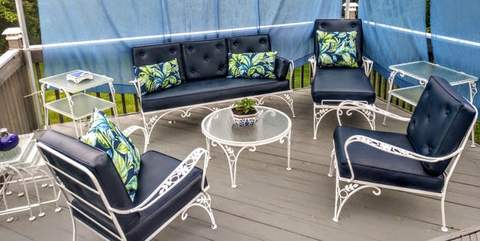
Vinyl patio furniture cushions restored with ColorBond LVP
With a little elbow grease and use of the right materials, you can restore vinyl furniture yourself. Improving the appearance and saving money compared to the expense of reupholstering or replacement. If you are wanting to know more about how to restore vinyl furniture with ColorBond LVP, please contact us at info@colorbondpaint.com.


